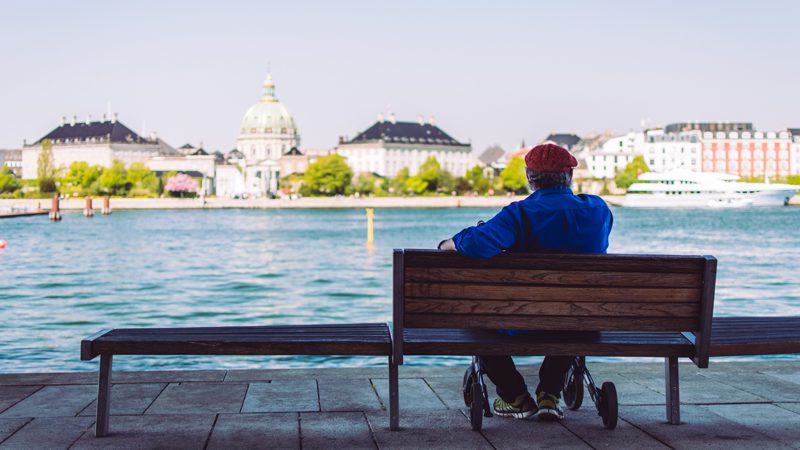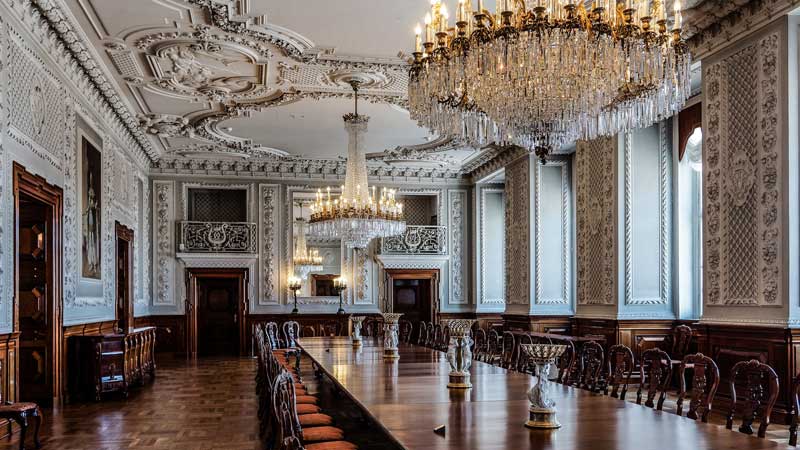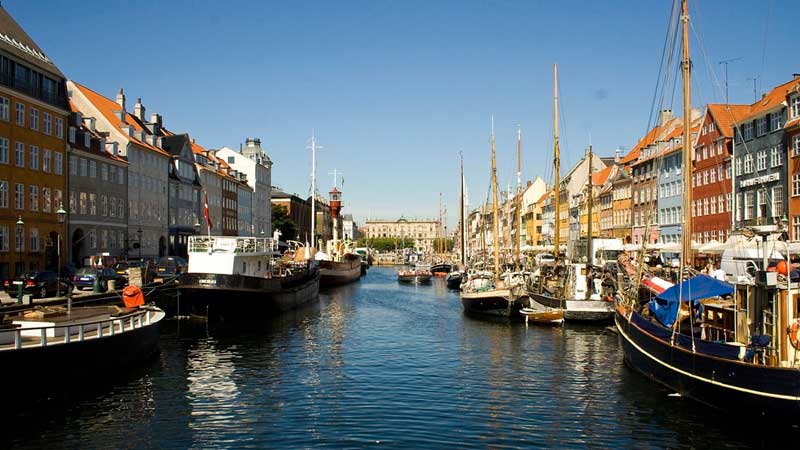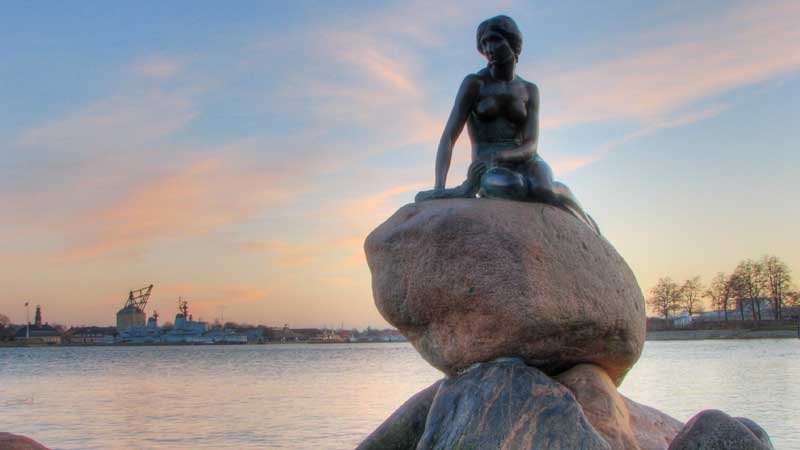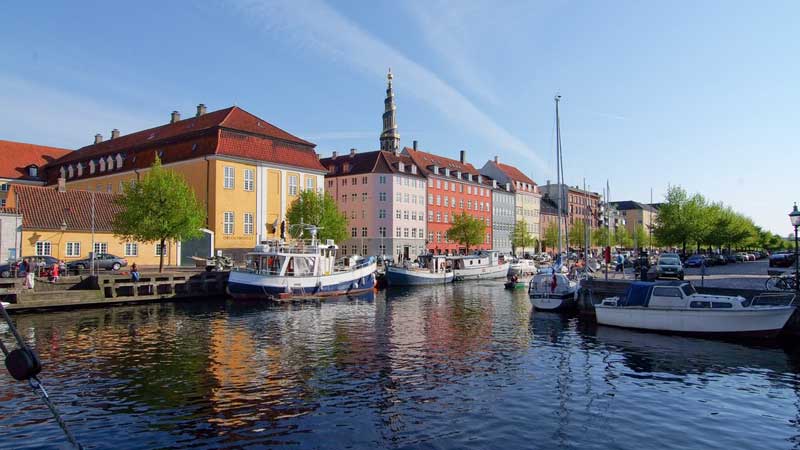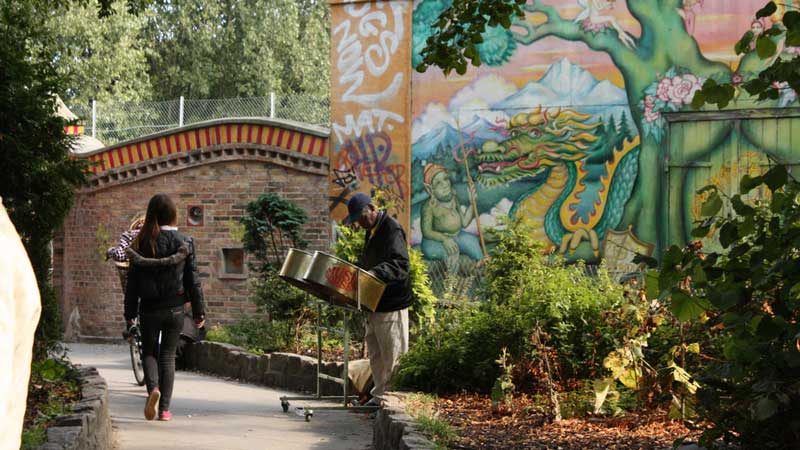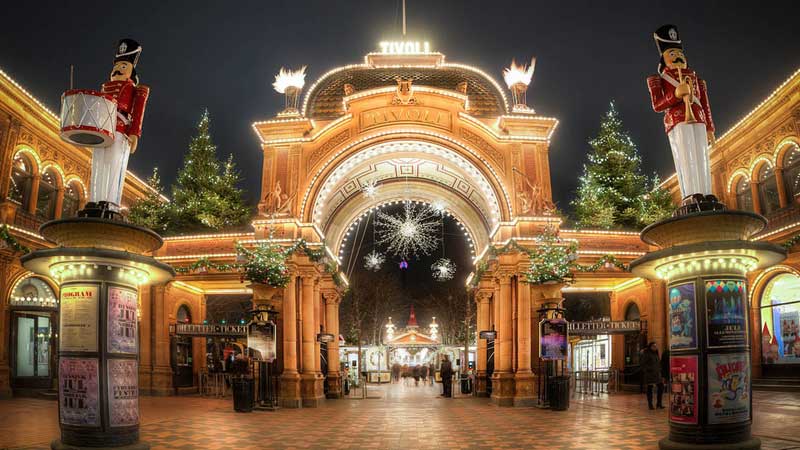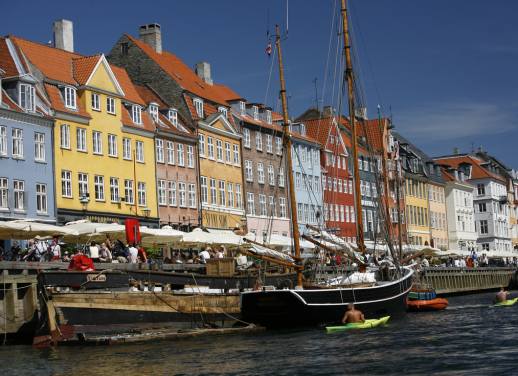A weekend in Copenhagen is one of the best ways to get a taste of Nordic culture. Why? Because it’s like the industrial-chic distillation of everything Scandinavian. A world-class culinary culture (spearheaded by the legendary Noma), a cafe and bar scene that sets the standard for effortless cool, and industrial design that has wormed its way into every living room from Shanghai to Sydney. Then there’s the history, about nine centuries worth, and cobbled, storybook streets straight from a Hans Christian Andersen tale. If you’re looking to immerse yourself in colourful Nordic architecture, build on your history knowledge, and consume way too many pastries, then I can guarantee you’ll go crazy for this vibrant and trendy city.
DAY 1
Explore the palaces and castles
If there’s one thing Copenhagen has no shortage of, it’s royal residences. The city itself has three major palaces and castles all within walking distance of the city center.
First, pay a visit to Christiansborg Palace. This building, built in Neo-baroque style, is currently used as the seat of the Danish Parliament, the Danish Prime Minister’s Office, and the Supreme Court of Denmark. It’s not the most attractive of the three, but you should find it interesting if you’re into politics.
RELATED: CHECK OUT OUR SMALL GROUP TRIPS IN DENMARK
Next up is Amalienborg Palace, where the Danish royalty currently reside. This was an intriguing place for me to visit, as Denmark’s Crown Princess Mary came from my hometown of Hobart, Australia, and the story of how she became a Danish royal is like a real-life Disney movie. Aside from dreaming about meeting a Danish prince to sweep you off your feet, you can also watch members of the Royal Guard in the area surrounding the Equestrian Statue, or head into the Amalienborg Museum.
Last is Rosenborg Castle. This is possibly the most impressive of the three as Rosenborg is the oldest and has the most historical significance. The castle was first built as a summer house in 1606 and evolved into the current castle in 1624, where it was used as the royal residences until 1710. Here is where you’ll find the Danish Crown Jewels, and the Throne Chair of Denmark. The gardens here are also very impressive – take a walk around to admire the perfectly trimmed hedges and rose garden surrounding the castle moat.
Walk along Nyhavn
Nyhavn is one spot that you absolutely can’t miss in Copenhagen, as this pretty harbour is the one you’ll probably see on most postcard images of the city. The rows of colourful 17th century buildings is undeniably gorgeous from every angle.
The harbour is a tourist hotspot with a large selection of restaurants and bars. It can get fairly busy during the summer months, so head over early in the day to avoid the crowds.
See the Little Mermaid and Kastellet
There are many stories about the Little Mermaid of Copenhagen. I was particularly interested to see it as I came across the Mermaid of Warsaw a few years ago, and legend tells that the Little Mermaid in Copenhagen was its sister who parted ways with the other in the Baltic Sea.
The real story of the Little Mermaid statue is that it’s a product of the famous fairy tale by Danish author Hans Christian Andersen. It was installed in 1913, and has since become an essential sight for every tourist in Copenhagen. The small-ish statue might seem a little underwhelming at first as there are an alarming number of visitors pointing their cameras towards her rock by the river, but I think it’s still worth spending 2 minutes of your time getting your own photo of the Little Mermaid.
Once you’ve got your photo, turn around and take a walk around Kastellet – one of the best preserved star fortresses in Northern Europe, which is positioned directly behind the Little Mermaid. When you cross the moat into the fortress, you’ll be free to wander around the old military buildings and historic site.
DAY 2
Wander around Christianshavn
Christianshavn is the new place to be in Copenhagen. The quiet and relaxed neighbourhood is easily accessible from downtown via the Yellow or Green metro lines.
Once you exit Christianshavn station, head towards the Church of our Saviour – a Baroque style church featuring a gold-rimmed tower standing proudly above the city rooftops. The narrow staircase to the top of the spire has 400 steps, the last 150 of which are on the outside of the tower. For those who can suppress their fear of heights, you’ll be treated to some awesome views of the city.
Another great spot in Christianshavn is Overgaden Oven Vandet, a pretty little street that parallels one of Copenhagen’s many canals. The architecture here is second only to Nyhavn, but this quiet canal street has much more of a residential atmosphere.
Seek out Freetown Christiania
After Overgaden Oven Vandet, turn right towards Freetown Christiania. If you’re using Google Maps to find it, search for ‘Christiania’ instead of ‘Freetown Christiania’ – I spent at least half an hour thinking that Freetown Christiania was just a boring old suburb before stumbling upon the real deal on my way back to Christianshavn station.
Freetown Christiania is one of the most interesting places in Copenhagen. The former abandoned army barracks was taken over by squatters in 1971, resulting in a large commune of about 850 residents. The area now caters for anyone who’d like to drink a beer in the sun and sample some vegetarian grub while immersing themselves in this quirky and artistic suburb.
Have fun at the world’s second oldest amusement park
Tivoli Gardens opened it’s doors in 1843, and is the world’s second oldest operating amusement park (after Dyrehavsbakken, also located in Denmark). For more of an adults only experience, I waited until the late afternoon to head over, as the park is open until 10PM or 11PM depending on the day of the week.
The park is open from April to September and entry is fairly inexpensive at 110 DKK (rides extra), or 220 DKK for an unlimited rides ticket. Inside the park, there’s a large selection of roller coasters, thrill rides, decent restaurants, snack stands, and gelato stalls.
Ready to get your hygge on? Check out our small group tours that pass through Copenhagen. Or sign up to our FREE e-newsletter for all the latest travel tips.
Written by Ashley Wheeler. You can check out more of her stories at aglobewelltravelled.com, or follow her on Instagram and Twitter.

